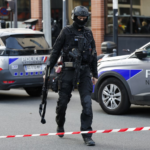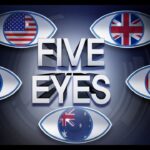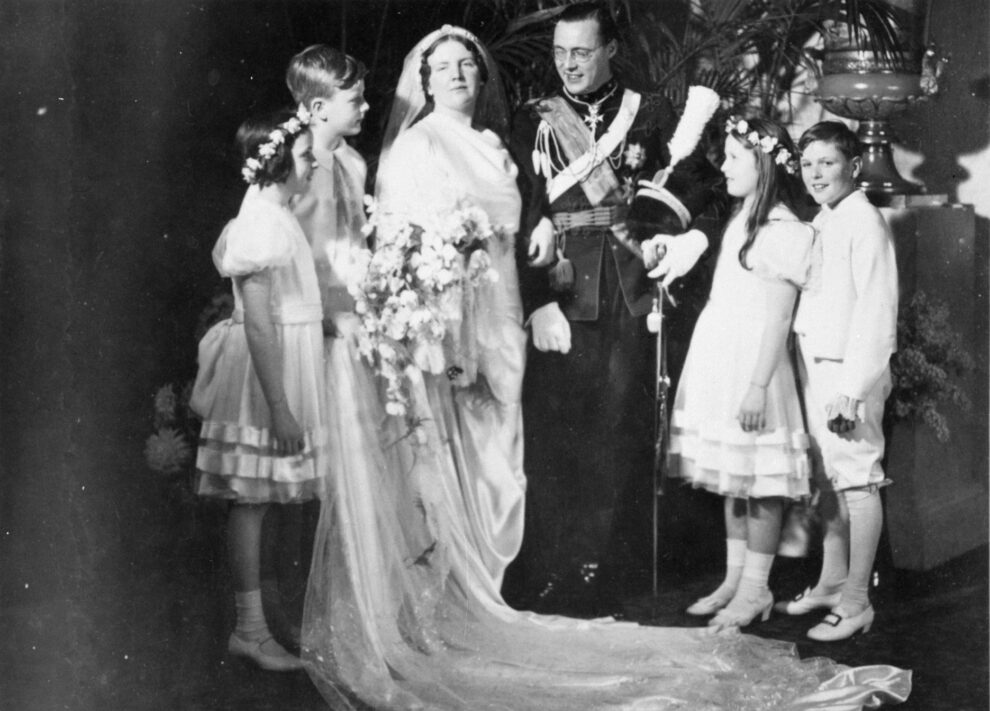A historian says he found the original membership card showing the Dutch late Prince Bernhard was a member of Hitler’s Nazi party. This was broadly known and little doubted, but Bernhard went to his grave denying it.
A new book written by Dutch historian Flip Maarschalkerweerd claims to have found the late Prince Bernhard zur Lippe-Biesterfeld’s original membership card for Adolf Hitler’s NSDAP in his private archives at Soestdijk Palace.
Maarschalkerweerd, who was interviewed by the NRC news outlet in a story published this week, writes that he went through the late prince’s archives after his death in 2004. The title of his upcoming book, « de achterblijvers, » could be translated as « the stragglers. »
A Jewish community advocacy group, CIDI, on Wednesday called on the government of the Netherlands to order a detailed historical inquiry into Bernhard’s past. CIDI Director Naomi Mestrum was quoted by public broadcaster NOS as saying, « The credibility of the Netherlands and the royal house is at stake. »
Final piece of proof?
The historian’s find would constitute another piece of seemingly definitive evidence for something that had been relatively well known for decades but would also confirm a specific detail that the late Queen Juliana’s husband grandfather to current King Willem-Alexander went to his grave denying.
Prince Bernhard was a member of a German royal family and became engaged to Juliana in 1936, several years after Hitler’s Nazi party, officially known in German as the NSDAP, had come to power.
Although he had acknowledged membership in a branch of the SS in Germany, claiming this was necessary in Germany in the early 1930s so as not to advertise yourself as an opponent of Hitler’s regime, he also said that a supposed copy of his NSDAP membership card that surfaced in US correspondence in the late 1990s was a forgery.
He said the same about correspondence about the 1936 cancellation of his membership in the year of his engagement.
« I can declare with my hand on the Bible: I was never a Nazi. I never paid for party membership. I never had a membership card, » Bernhard said in a series of interviews with newspaper de Volkskrant published before his death.
Why would these German papers have ended up with Bernhard?
Maarschalkerweerd told NRC that he was initially surprised to find the papers in Soestdijk palace, given that « those were German pieces you would expect them to be in Germany. »
He said he found the answer in the form of a personal correspondence addressed « Dear Prince Bernhard, » from Lucius Clay, the military administrator of the US-occupied zone in Germany, dated 1949 and saying: « I kept this in my safe for a number of years. As I was about to destroy it, I remembered that you have earned the right to destroy it yourself. »
Another historian, Gerard Aalders, told NRC he felt personally vindicated on reading the new information, given the responses even from the late royal directly that he had received for his earlier work on the same subject in the 1990s.
« I was accused of all kinds of things at the time, » Aalders said. « A week before his death, Bernhard called me from his deathbed to deny everything. »
RAF pilot and feted war hero, friend of King George VI, senior Dutch officer
Bernhard’s past ties to the Nazi party are difficult in the Netherlands, given the legacy he built during World War II itself.
He seems to have cut ties to the NSDAP organs, albeit not to some personal acquaintances in Nazi Germany, on moving to marry and during the war he asked to stay behind in London, not to join his wife in the relative safety of Canada, to contribute militarily.
Bernhard had hoped for an intelligence posting, but Allied commanders seemed too wary of his past connections for such a sensitive position.
King George VI, also with family roots in Germany and a friend of Bernhard’s, urged Winston Churchill to consider Bernhard for some kind of position. A World War II intelligence officer by the name of Ian Fleming, better known now as the author of the James Bond novels, was assigned to vet the prince.
Bernhard eventually became part of the Allied war planning councils, and flew as both a fighter and bomber pilot with the British RAF in several theaters under the alias « Wing Commander Gibbs. »
He helped organize the Dutch resistance movement and acted as personal secretary for his wife’s mother, Queen Wilhelmina, who also stayed in London during the occupation of the Netherlands.
It’s not clear why Bernhard did not destroy the papers during the decades that followed; Aalders speculated that there were other signs of him being nostalgic for the era and some of his old ties in Germany.
He was prominently involved in Operation Market Garden, the major September 1944 mission to reclaim much of the occupied Netherlands and several bridges across the Rhine River, and toured the streets of Nijmegen after the fierce battle to liberate the city.
Bernhard received several military and civilian honors from the UK, the Netherlands and later even then-West Germany for his various roles in the war and the resistance.
He was present in the talks on Germany’s surrender, and, after the war, the position of Inspector General of the Dutch military was created for him to occupy. He’s also well known for his postwar roles in helping to found both the Worldwide Fund for Nature (WWF) and the Bilderberg Group.
His aviation interest endured, with him given senior positions with the military aviation company Fokker and civil airline KLM Royal Dutch Airlines.
However, he had to give up these positions when he was implicated in the 1970s Lockheed bribery scandals, when it emerged he had accepted bribes to help ensure the US planemaker won contracts to supply hardware to the Netherlands. He had referred to the payments he received as « commissions » in a letter to Lockheed published amid the investigation.
Source: DW





































